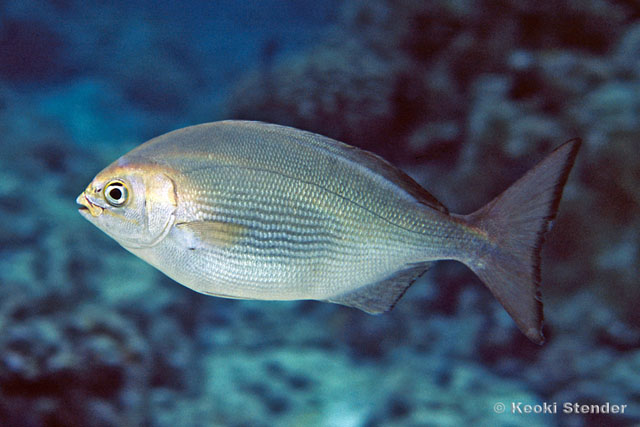| Kyphosidae (Sea chubs) |
| 41 cm TL (male/unsexed) |
|
reef-associated; marine; depth range - 1 m |
| Central Pacific: Hawaiian and probably in the Line Island groups (Ref. 86689). |
|
Dorsal spines (total): 11-11; Dorsal soft rays (total): 12-12; Anal spines: 3-3; Anal soft rays: 11-11; Vertebrae: 26-26. This species is distinguished by the following characters: body oval, deep and well compressed; mouth terminal, slightly oblique ventrally and the anterior tip o upper jaw bluntly pointed; incisiform teeth; scales on interorbital region; caudal fin emarginate, shallow; D XI,12; A III,11, anterior part of anal-fin soft-rayed portion well elevated; the longest anal-fin soft ray (second) longer than the longest dorsal-fin spine (sixth); gill rakers on lower limb of first arch on the external side 5-6 upper limb, 13-16 lower limb; pectoral fin long and broad, with 18-19 (mode 18) soft rays; pelvic fin when depressed almost reaching the anus (19.3-20.8%SL); total lateral line with 67-78 scale rows, pored scales 54-63; longitudinal row with 64-68 scale rows; vertebrae: precaudal 10, caudal 16; pterygiophores: dorsal 21 and anal 12 (Ref. 95491). |
| Benthopelagic in shallow water, in the surge zone near coral and rocky reefs (Ref. 58302). |
|
Not Evaluated (N.E.) Ref. (130435)
|
| harmless |
Source and more info: www.fishbase.org. For personal, classroom, and other internal use only. Not for publication.
